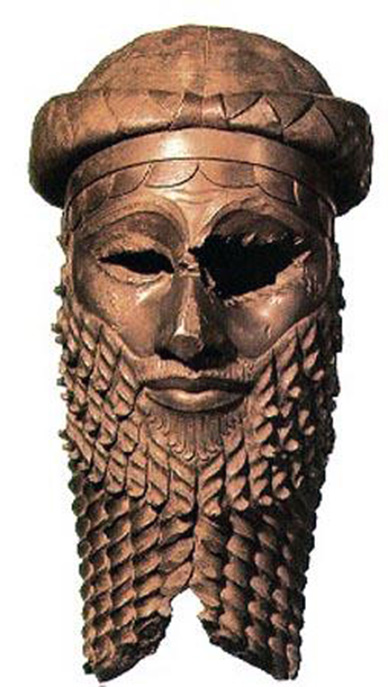Sumerian cities were fighting war very frequently among themselves, but none managed to achieve a dominant position. However, such frequent wars had some consequences; particularly it exhausted the cities, materially and physically. This situation paved the way for the first great ruler of the war in the history of Western civilization – Semite Sargon (also known as Sargon the Great) of Akkad. Around 2400 BC he united the Sumerian cities – countries and established Akkad empire (2340 – 2284 BC), which extended from Elam to the Mediterranean Sea.
The exact origin of the Akkadians is unknown. It is believed that they penetrated from Syria in to the area of Diyala and in the northern part of Mesopotamia.
| Rulers: |



Sargon I (2340- 2284 BC) – conquered Sumerian cities (Uruk, Ur, Lagash, Umma), he founded the Akkadian empire. Sargon’s empire was clerks – centralist country. He built port in the Tigris, and he organized a standing army. He took the campaign to the west, which until then was called Ammuru. He penetrated in to Palestine and Syria, and all the way to the border of Anatolia (Asia Minor). Sargon’s power stands out in his titles, where he was referred to as “the master of all people and countries”. He took the title “King of the Four corners of Earth”. Sargon conquered Mari, Yarmuti and Elam all the way to the Taurus Mountains. In this way, he secured trade routes, and in that way a supply of wood and precious stones could freely be transported down Euphrates to Akkad.
There is a legend that his mother had left him on the bank of the Euphrates, and he was found by Akki, the peasant drawing water from the river. This man raised him. According to legend, the goddesses Ishtar become fond of Sargon and she proclaimed him as king of Akkad. He was crowned in the temple of the goddess Enlil (Uruk). His successors were: Rimush (2284 – 2275 BC), Manishtushu (2275 – 2260 BC), Naramsin (2260 – 2223 BC), Sharkalisharri (2223 – 2198 BC).
Rimush (2284 – 2275 BC) – was the second king of the Akkadian Empire. He was the son of King Sargon the Great and Queen Tashlultum. His sister is priestesses Enheduanna. In several cities, were found votive offerings that he had left. He ruled for nine years, that is how it was recorded in the Sumerian king list. His brother Manishtushu succeeded him. Rimush was uncle to Manishtushu’s son Naram Sin. Rimush quelled rebellions in Sumer and Elam. He came all to way to the Persian Gulf.
Manishttushu (2275 – 2260 BC) – took campaign to conquer Elam, Anshan and Shirihama. He burst into the southwest area of Iran, he wanted to strength a domestic policy in the Akkadian Empire.
Naram-Sin (2260 – 2223 BC) – was Akkadian ruler and grandson of Sargon the Great. He was the last great king of the Akkadian country. During his period, there were major riots in Babylonian cities – Elam, Simurrum and Marad in the east, in the south Magan and in the west Mari. Naram-Sin has greatly expanded the country and it was called the “King of the Four Corners of Earth“. In the last few years of his reign, he had made a pact with the Elamite’s king Hita.
Shar Kali Sharri(2223-2198 BC) – fought against the enemies of Akkad. He quelled rebellions in Sumer, and conquered the Amorites. His reign was filled with wars against Gutium of the mountain Zagors. Elam became independent of Akkad.
Gutium tribes of the mountain Zagros partly destroyed Akkadian empire for burglary, mostly thanks to the Sumerian Renaissance and the so-called Third Dynasty of Ur (2118-2007 BC), who regained control of the south of Mesopotamia. The main ruler of this period was Ur-Nammu. He made one of the first known lists of Western civilization laws. This list of laws is preserved only in parts, but it is known that penalties were usually paid in material goods. The list of laws was dedicated to standardization of measures and weights. This shows the importance of the trade at the time.
